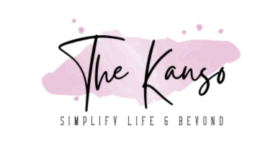Cultural norms and taboos are not static; they evolve as societies grow and change. This evolution can be traced through the lens of activities and behaviors once deemed acceptable but are now considered taboo in modern American societies. Here, we’ll explore 15 things that are taboo now but were socially accepted earlier.
Smoking in Public Spaces

Once a common sight, smoking in public spaces like restaurants, planes, and offices was widely accepted. Increasing awareness of the health risks associated with secondhand smoke has led to stricter regulations. As of 2020, 28 states in the U.S. have comprehensive smoke-free laws covering workplaces, bars, and restaurants. Legislation and societal pressure have significantly reduced public smoking now, highlighting health over habit.
Spanking Children

Physical discipline was once a standard parenting practice. Research shows that spanking can lead to increased aggression in children and does not effectively teach corrective behavior. According to The New York Times, a group of 67,000 doctors also recommended that pediatricians advise parents to stop spanking their children. Spanking may be non-injurious or openhanded hitting to make them behave better. Parenting guides and psychological advice now promote alternative discipline methods, such as time-outs or positive reinforcement.
Not Wearing Seatbelts

Seatbelts in cars were once optional and frequently ignored. Seatbelt use in the U.S. has climbed from 14% in 1983 to over 90% in 2021, driven by “Click It or Ticket” campaigns and proven efficacy in saving lives during accidents. Furthermore, seat belt usage has accelerated by 91.9% since 2023. This reduces injury while driving which saves the lives of many people.
Drinking and Driving

With over 10,000 deaths annually attributed to alcohol-impaired driving, public opinion and laws have shifted drastically. Campaigns like Mothers Against Drunk Driving (MADD) have been pivotal. Moreover, strict laws like banning mobile phones while driving, widespread public education campaigns, and the advent of Uber services have also reduced incidents.
Gender Discrimination at Work

Historically, workplace gender discrimination was commonly accepted. As gender equality gains ground, laws and societal norms have evolved. Previously, interrupting women in professional settings was not widely challenged. Focus on gender equality and workplace inclusivity has spotlighted this issue. Corporate policies and training programs now advocate for equal participation in meetings. For instance, a 2023 report by USAID emphasizes the ongoing global efforts to empower women by promoting equitable participation in all sectors, including professional environments where women’s voices are encouraged to be heard equally.
Casual Racism

Racial jokes and stereotypes were once routine in media and conversation. Awareness and understanding of the harm caused by racial stereotyping have grown, partly due to social media and activism. Movements like Black Lives Matter have further shifted public perception. Education, policy changes, and a societal push towards inclusivity have made such behaviors unacceptable.
For instance, in the entertainment industry, shows and movies have been re-evaluated and sometimes edited or removed from platforms. The Oscar-winning film “Gone with the Wind” was temporarily removed from HBO Max earlier. It then returned with a new introduction that discusses its historical context and portrayal of race. This reflects a broader trend of re-examining media and entertainment through a more critical, contemporary lens that shifts from casual racism towards a more thoughtful and inclusive approach.
LGBTQ+ Discrimination

Discrimination against LGBTQ+ individuals was once openly practiced and sanctioned. Legal protections, including marriage equality and anti-discrimination laws, have redefined public attitudes. This aligns with a notable event — the Respect for Marriage Act signed by President, Joe Biden, in December 2022. It was a response to concerns about potential rollbacks on marriage equality.
The legislation required states to recognize lawful same-sex and interracial marriages, reinforcing a more inclusive society. Till today, the act’s passage and the high support in polls demonstrate the ongoing cultural shift toward greater acceptance and legal protection for gay marriage in America.
Public Littering

Littering in public places was common earlier. However, environmental campaigns and recognition of the impacts of waste have changed behaviors. Today, hefty fines and community initiatives aim at reducing public litter. Enforcement and education have helped inculcate a sense of environmental responsibility.
A common example of these efforts is the increasing adoption of “plogging,” a trend where individuals combine jogging with picking up litter. For instance, in cities like Seattle, Denver, and Austin, organized plogging events have become a regular feature. These events support local businesses and non-profit organizations, providing participants with gloves, bags, and other necessary equipment.
Workplace Harassment

Once dismissed as “office banter,” workplace harassment is now recognized as a serious issue. High-profile cases and movements like #MeToo have spotlighted its prevalence and damage, leading to stricter workplace policies. Legal frameworks and HR policies are enforced more rigorously to provide safe working environments.
Excessive Work Hours

Earlier, long work hours were glorified as a badge of honor. However, the recognition of work-life balance benefits has reshaped this norm. For example, the approach taken by Microsoft’s U.S. operations has been at the forefront of experimenting with shorter work weeks and promoting more flexible work arrangements. Microsoft reported that these changes boosted employee well-being and led to a measurable increase in productivity levels. Many other companies such as Bolt and Buffer have also started promoting flexible working hours and prioritizing productivity over presence.
Driving Large, Inefficient Vehicles

The trend of driving large, fuel-inefficient vehicles was once a status symbol. Environmental concerns and fuel economy standards have made smaller and more efficient vehicles, more desirable. Government regulations and changing consumer preferences have driven the adoption of electric and hybrid cars.
Using Disposable Plastics

The rampant use of single-use plastics was standard without much thought about environmental impact. The environmental impact of plastics has led to a shift towards sustainability. Many states have implemented bans on single-use plastics. Legislation and greater public awareness like the introduction of biodegradable products, have spurred the use of reusable and biodegradable materials.
Ignoring Accessibility in Design

Accessibility in public and private spaces was often an afterthought. Legal requirements and a better understanding of diversity and inclusion have emphasized the importance of accessible design. Laws like the Americans with Disabilities Act (ADA) and changing design practices have made accessibility a standard consideration in architecture and product design.
Ignoring Mental Health

Increased awareness and advocacy have normalized seeking help for mental health challenges. For example, a large-scale initiative by several tech companies in Silicon Valley has begun incorporating mental health days into their standard benefits packages, allowing employees to take time off for mental health reasons without stigma. This policy change is part of a broader trend of workplaces recognizing mental health as equally important as physical health.


